September brings the end of the year’s peak planting season, but that doesn’t mean your garden is finished. In fact, September is a great opportunity to plant and prepare your garden for next year. This is why we’ve made the complete guide on what to plant in September.
As summer comes to an end and fall approaches, you can take this time to prepare your garden for the coming seasons. Different types of flowers, herbs, vegetables, and shrubs can not only survive but also thrive in the fall. Whether you’re looking to add some color to your flower beds or start next year’s vegetable garden, September is a great time to start.
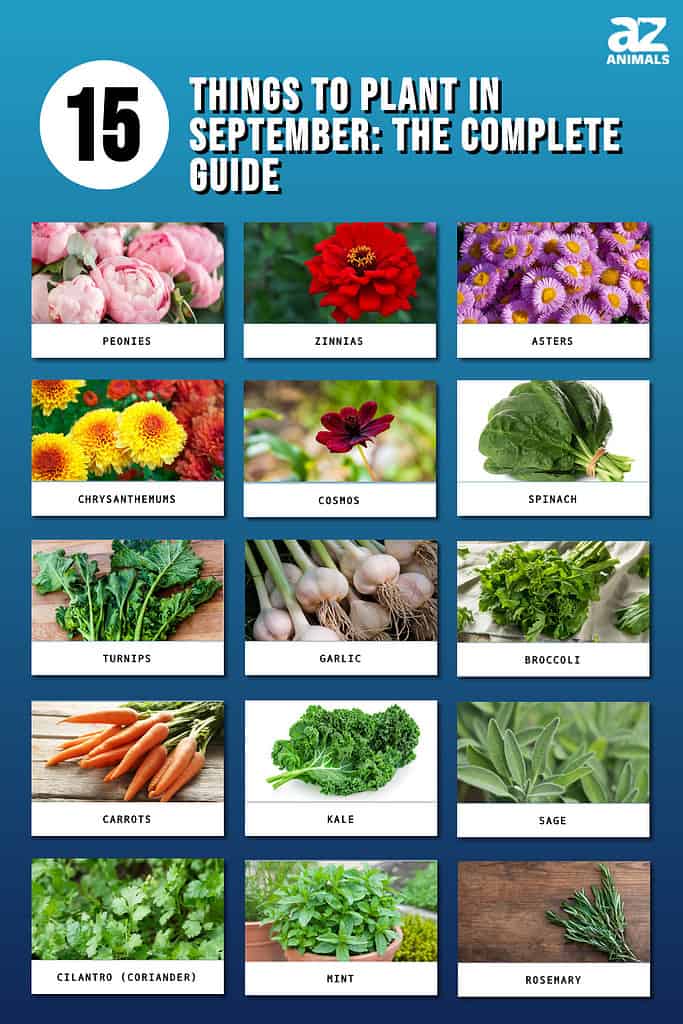
Flowers
September is the perfect time to plant some colorful fall flowers or get those spring flowers planted for an early bloom.
1. Peonies
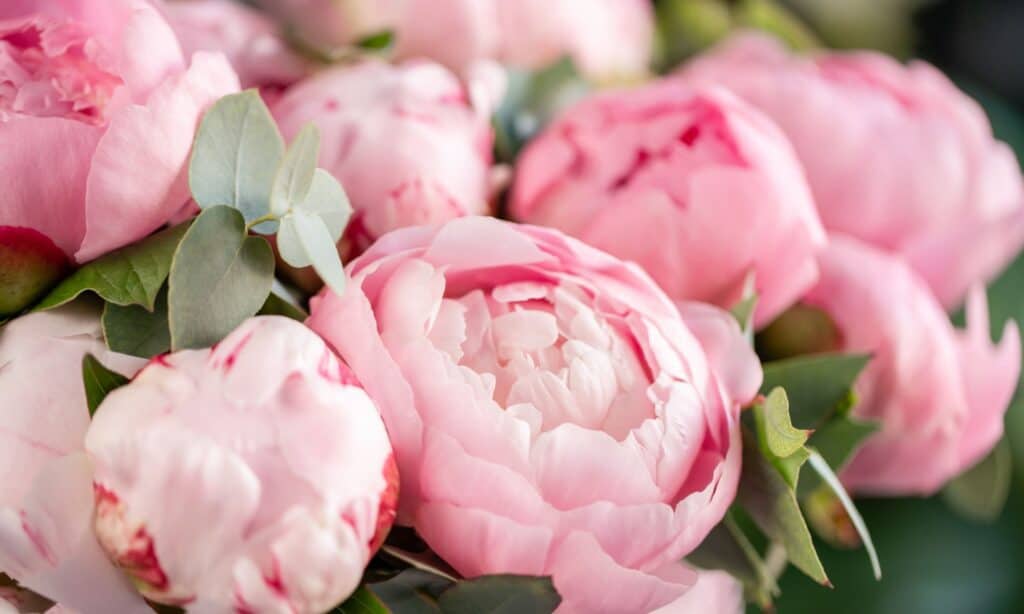
Peonies are beautiful perennials that come in various colors.
©Fusionstudio/Shutterstock.com
Peonies are beautiful perennials that come in a variety of colors. These flowers are best planted in the fall, so they can bloom next spring. The second half of September is the best time to plant these beautiful flowers.
They need full sun for about 6-8 hours a day and should be planted about 2 inches below the soil surface. Use peony cages to help support the growth of this small shrub. Water thoroughly once planted and then again when the foliage starts to grow in the spring.
2. Zinnias
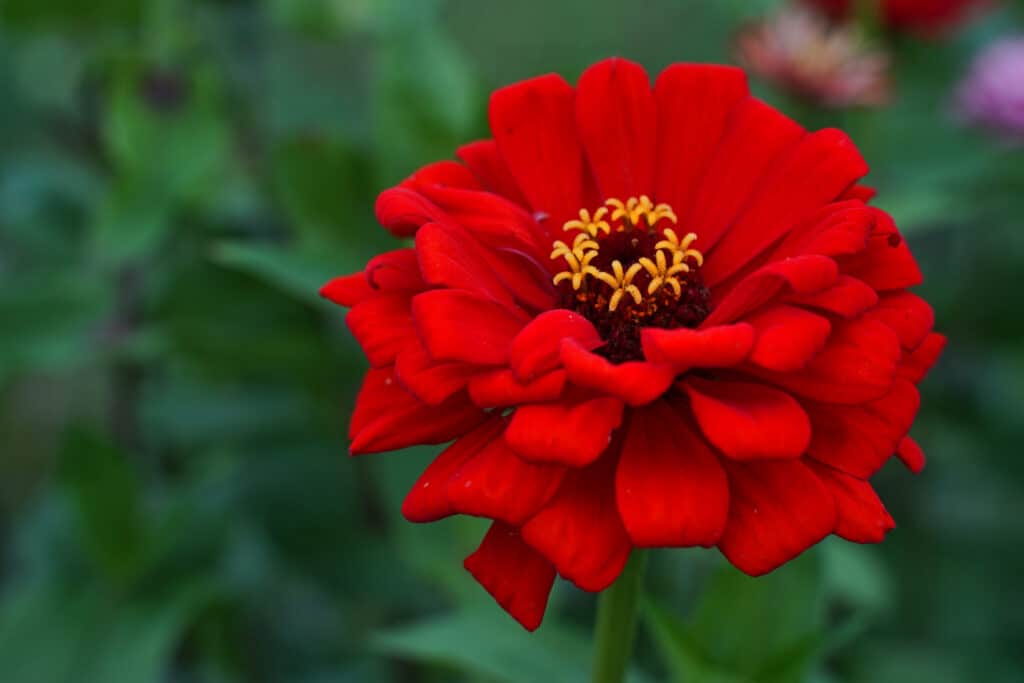
Zinnias come in a variety of colors and petal shapes.
©iStock.com/Kathy Reasor
These fast-growing flowers are perfect for brightening up a fall flower bed. Zinnias can bloom just one month after planting and are best planted once the summer heat starts to wane. They thrive in early fall weather, but they will die out after the first frost. In areas that have mild winters, zinnias can last for much longer.
Zinnias should be planted in areas that receive full sun, about 9-12 inches apart. If you plan to leave your zinnias on the plant, be sure to remove old flowers that may cause disease or prevent new growth. Watering is best done at the base of the plant every five days, but be sure not to overwater.
3. Asters

When planting asters, be sure to space them 1-3 feet apart.
©Klever_ok/Shutterstock.com
While most flowers tend to die out towards the end of summer and early fall, aster flowers thrive during this time. They are important late-season nectar sources for pollinators and are the perfect addition to any fall garden. Early September is the best time to plant these beauties.
When planting asters, be sure to space them 1-3 feet apart. They prefer areas with partial to full sun in areas with cool summer nights. In warmer areas, be sure to protect them from the midday sun. Water thoroughly after planting and then regularly twice a week until rainfall is consistent in your area.
4. Chrysanthemums
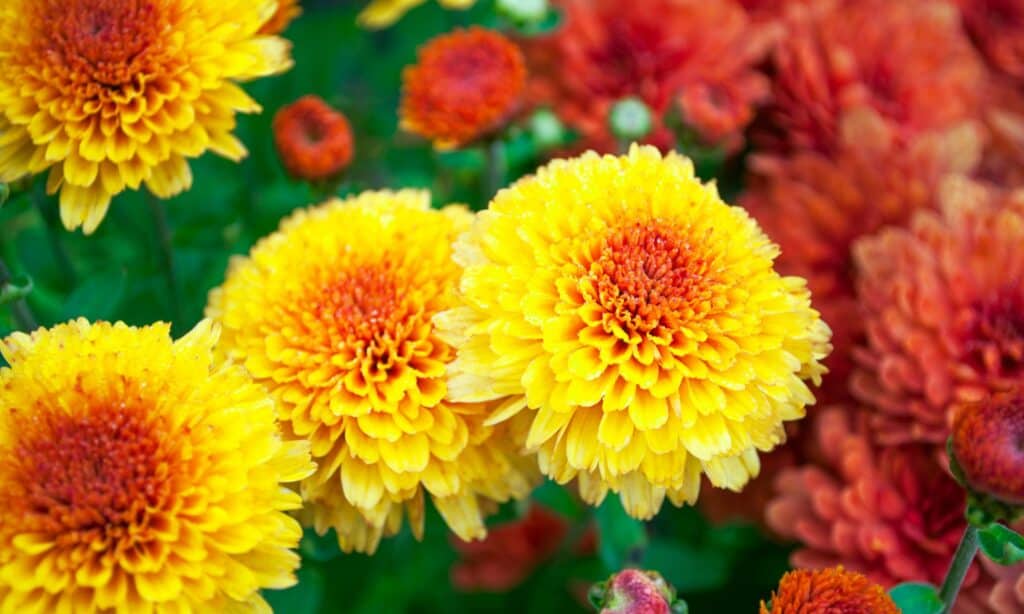
Chrysanthemums prefer full sun and rich, well-drained soil.
©Elan Havrilyuk/Shutterstock.com
Any time during September is an excellent time to plant chrysanthemums. They are naturally hardy, and with the right winter, protection can continue to come back year after year. These vibrant flowers are perfect additions to fall gardens and one of the symbolic flowers of autumn.
Chrysanthemums should typically be planted in spring but can be planted as late as six weeks before the first frost in your region. They prefer full sun and rich, well-drained soil. Be sure to water these flowers frequently because they get thirsty fast.
5. Cosmos
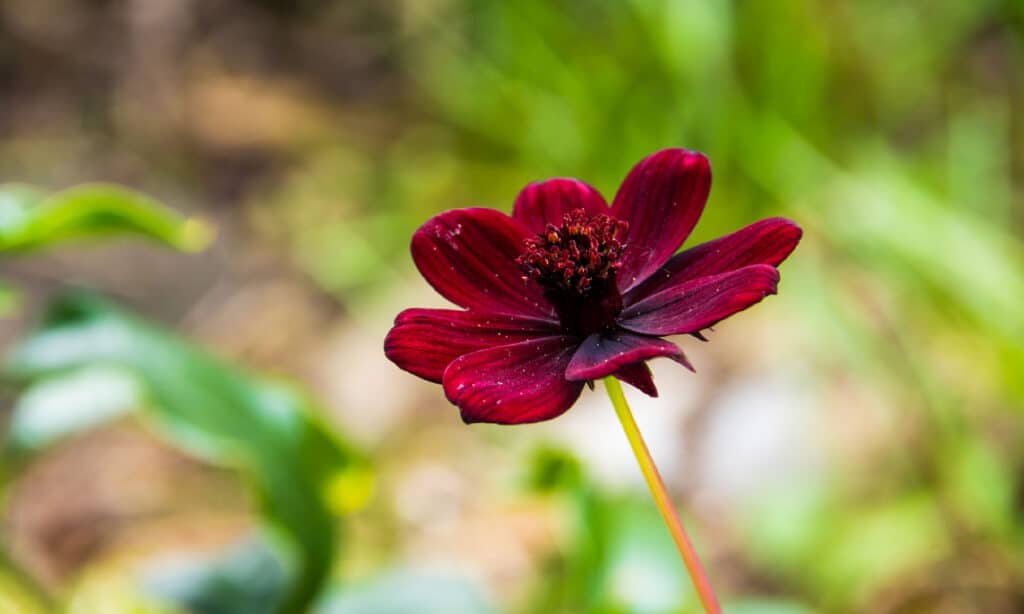
Cosmos are hardy and can grow in most soils that aren’t too rich.
©iStock.com/kinpouge05
Early September is the latest you can plant cosmos in places that remain warm through early autumn. They thrive in the warmth, so if your area gets cold in early fall, these might not be the best flowers to plant. Cosmos are hardy and can grow in most soils that aren’t too rich.
When growing cosmos from seeds, remember that it takes about 2 months to bloom, so you may only get a few weeks to enjoy this colorful flower. After the first bloom, the cosmos will continue to come back every year from summer until the first frost. Make sure to plant seeds no more than ¼ inch deep, about 12 inches apart. Water regularly until the foliage starts to emerge, but make sure not to overwater.
Vegetables
September is the optimal time for most areas to plant cold-weather vegetables. These are the best ones to plant in September for almost any region.
1. Spinach

Spinach grows best in rich soil that has been enhanced with compost.
©New Africa/Shutterstock.com
Spinach is one of the best vegetables to plant in September. This plant grows best in rich soil that has been enhanced with compost. In areas where winter is mild, spinach will grow and thrive through the season. It should be planted at the end of September when soil temperatures begin to cool. Most spinach takes about six weeks to mature, but baby leaves can be cut off and eaten before then.
When planting spinach, be sure to plant seeds ½ an inch deep and about 12 inches apart in fertile, well-drained soil. Spinach can easily be grown in a bed or a trough. Be sure to protect the young sprouts with mulch before the weather gets too cold. Water regularly to keep the soil moist, and replace mulch to keep in moisture.
2. Turnips
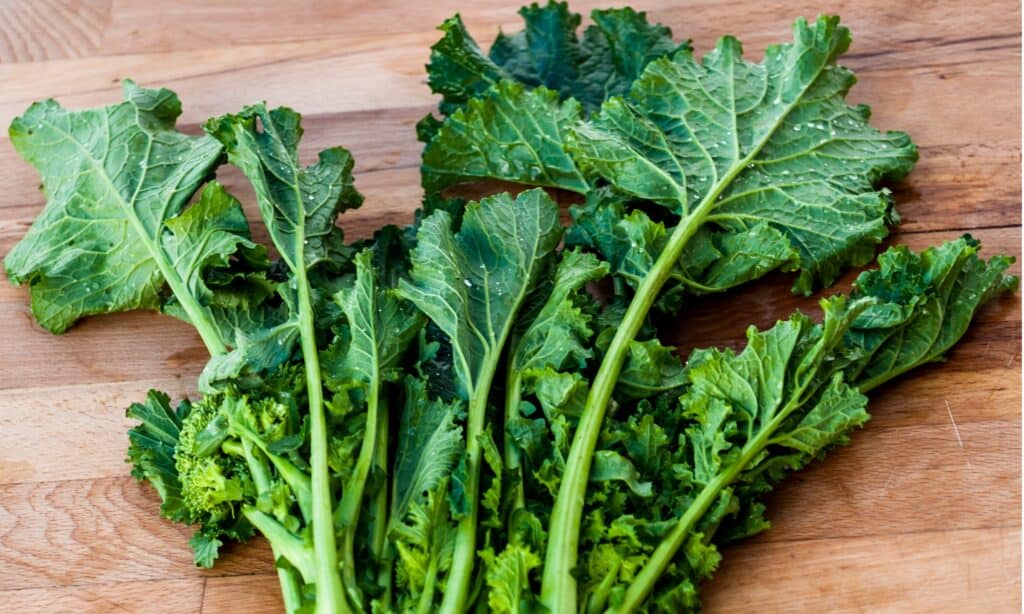
When turnips are planted in late summer rather than spring, they typically turn out sweeter and more tender.
©iStock.com/peuceta
Turnips are cool-weather vegetables that can be planted in either spring or fall. When turnips are planted in late summer rather than spring, they typically turn out sweeter and more tender than if planted in spring.
These vegetables can be seeded directly into the ground. The green foliage is edible and takes about a month to be ready to harvest, while their edible roots take about two months.
When getting ready to plant, mix a low organic fertilizer into the soil about 12 inches deep, but avoid over-fertilizing. Plant the seeds ¼ to ½ an inch deep and 1 inch apart in an area they will get full sun. Water thoroughly and regularly, once or twice a week. Use plenty of mulch to retain moisture.
3. Garlic
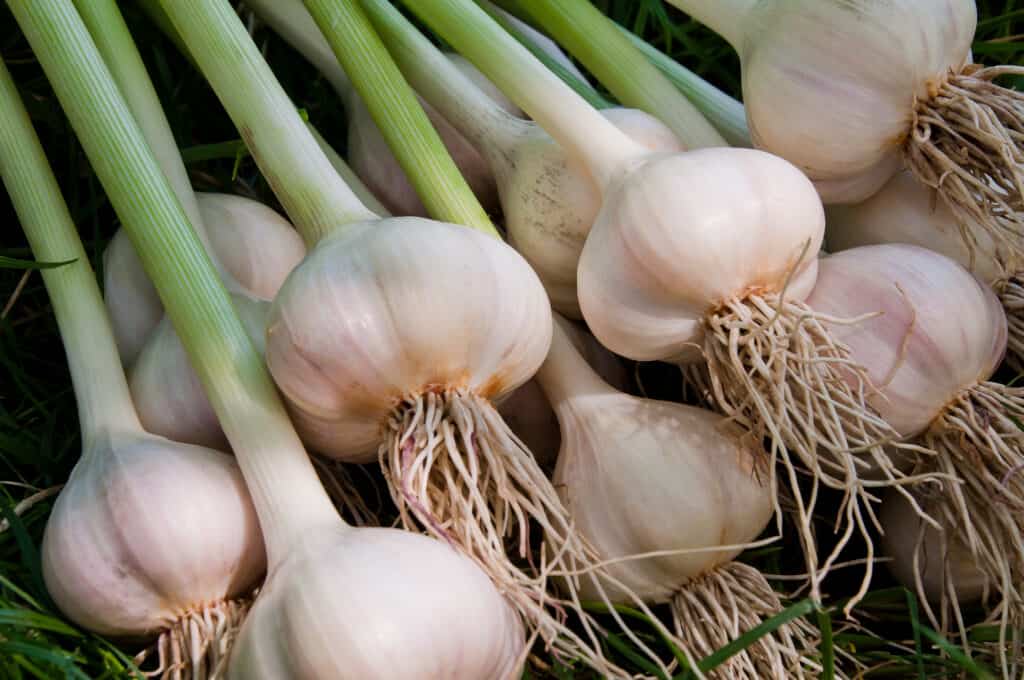
To plant garlic, use large, healthy cloves with the papery husk still intact.
©Liubomyr Tryhubyshyn/Shutterstock.com
Garlic is pretty easy to grow if you time it correctly. Late September and November is the perfect time to plant this vegetable. Garlic will grow best if it experiences a dormancy period during winter, so it can sprout foliage and then bulbs in the spring.
To plant garlic, use large, healthy cloves with the papery husk still intact. Plant the garlic cloves 4-8 inches apart and 2 inches deep, with the wide end facing down. When temperatures start to drop, heavily mulch the garlic beds for proper overwintering. Remove mulch once the threat of frost has passed. Water bulbs every 3 to 5 days during spring once the frost has completely passed.
4. Broccoli
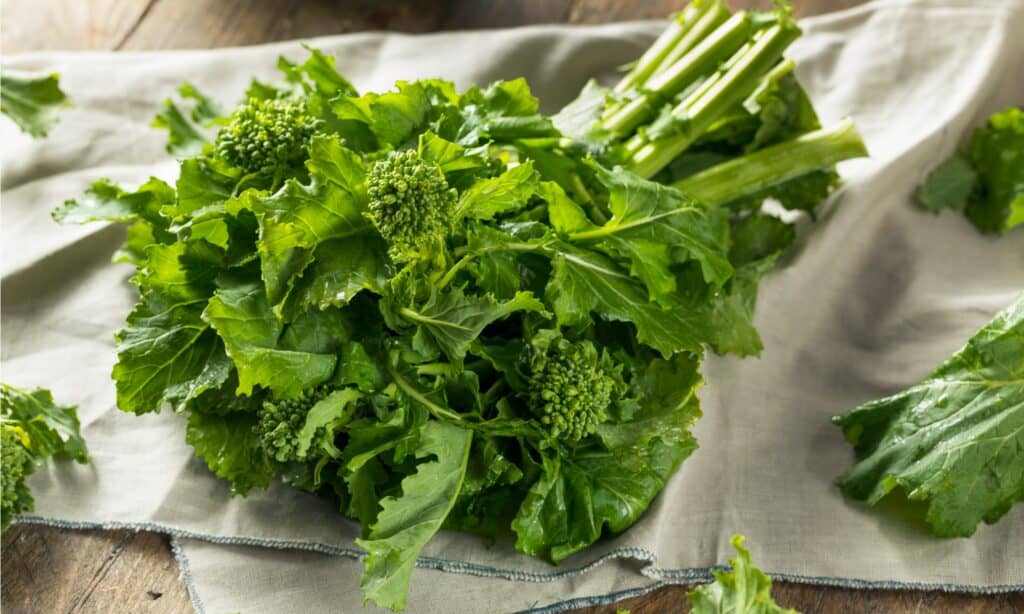
While broccoli seeds are capable of germinating in low-temperature soil, warmer soil speeds up development greatly.
©iStock.com/bhofack2
Broccoli is best when planted in either early spring or mid to late summer, depending on the region. In warmer climates, it’s best to plant in early September to give the plant enough time to fully mature before the first frost. While broccoli seeds are capable of germinating in low-temperature soil, warmer soil speeds up development greatly.
To plant broccoli seeds outdoors, sow seeds about ½ an inch deep, 3 inches apart. Plant in an area that receives full sun. Fertilize the broccoli three weeks after planting. Mulch the broccoli beds to keep soil temperatures consistent. Water generously when first planting, then regularly once a week.
5. Carrots

Carrots need free-draining soil in order to grow.
©5 second Studio/Shutterstock.com
Carrots are known for being hard to grow, but with the right preparation and care, they can be enjoyed in just a few months. Anytime during September is great for planting carrots, but the earlier, the better. These root vegetables need free-draining soil in order to grow; the sandier the soil, the better! When planting, carrot seeds should be sown about 10 weeks before your region’s first fall frost.
Prepare your grow site by tilling the soil (if you’re not using raised beds) about 10 inches deep, making sure there are no rocks or clumps of soil. Mix compost and sandy topsoil into the first 6 inches. Plant seeds ¼ inch deep, about 3 inches apart in rows approximately 1 foot apart.
Cover your carrot bed with a layer of either fine sand or compost to keep moisture in. Keep the soil moist with regular shallow watering.
6. Kale
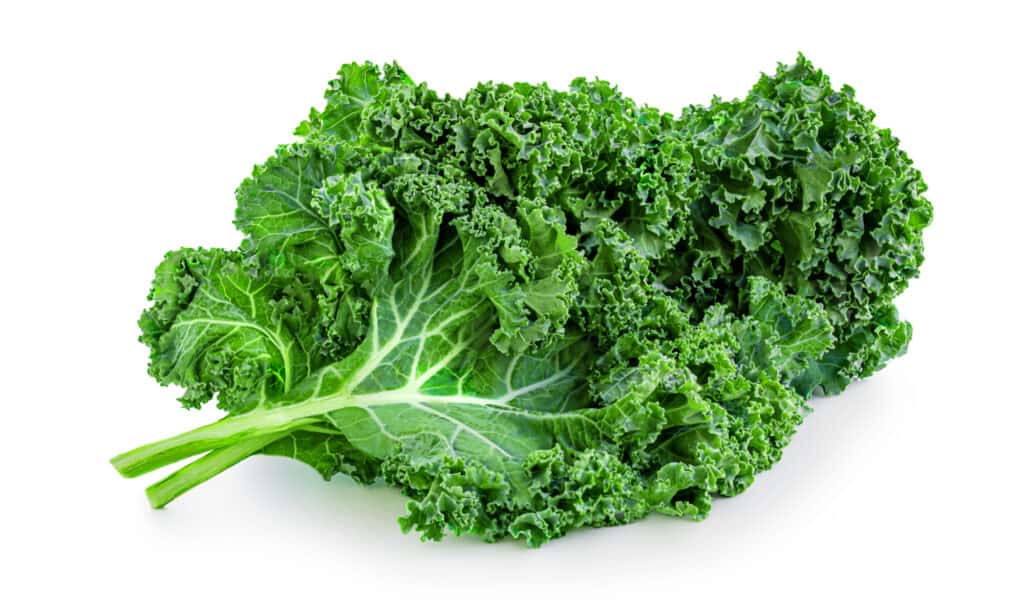
Kale should be planted around 2 feet apart from each other and buried 5 mm deep.
©Natali Zakharova/Shutterstock.com
Kale is perfect for planting in September and is one of the few plants that can survive the frosty winter. This vegetable is best planted around six weeks before the first frost. Kale grows slowly in September, and as the weather cools, the flavor of the kale begins to flourish.
Kale should be planted around 2 feet apart from each other and buried 5 mm deep. Full sun is recommended, with well-drained soil. The plant should receive around 1.5 to 1 inch of water weekly. Neutral soil with a pH of 6 to 7.5 is what brings the greatest yield of kale.
Herbs
Fall herbs are a wonderful way to add some green to your garden and flavor to your kitchen. You can plant fall herbs in existing flower beds or pots you can keep in the kitchen window! These are the best fall herbs to plant in September.
1. Sage
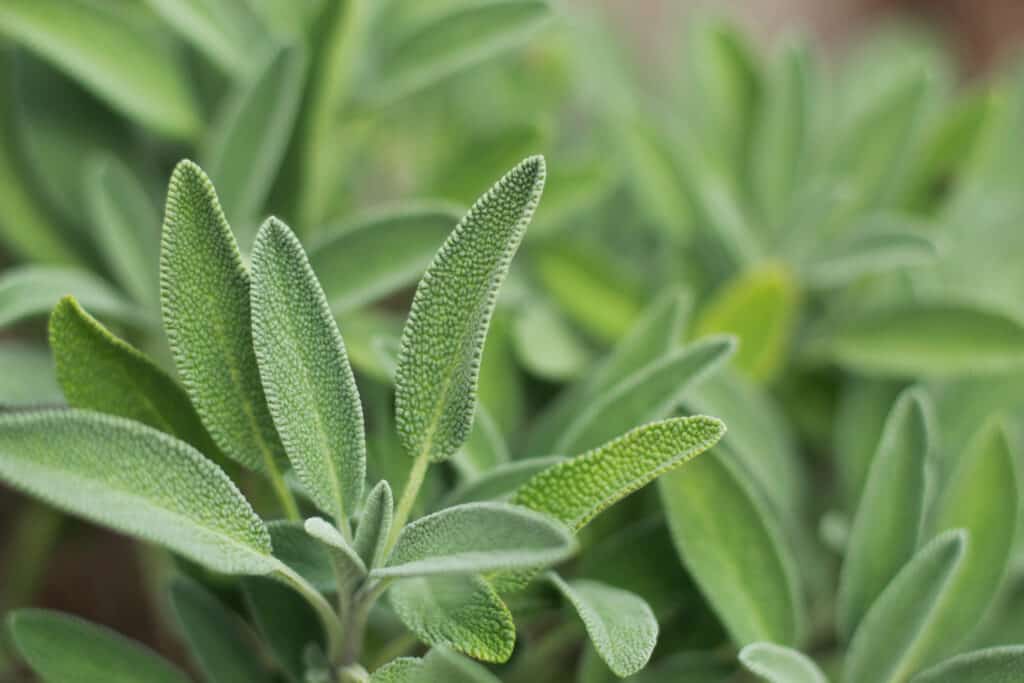
Sage is an aromatic herb with a rich medicinal and culinary history.
©iStock.com/Bonnie McCann
Sage is a perennial that can be planted in either spring or fall. Planting sage in fall will provide a woodier base for your plant, making it easier to take cuttings and propagate them into new sage plants. When growing sage from seed, be sure to start at the end of September when temperatures start to cool.
Whether you’re growing sage in a pot or straight into a garden bed, be sure to use nutrient-rich, well-drained soil mixed with compost. Sow seeds about ¼ inch deep, 18 to 24 inches apart, in an area that gets plenty of suns. Water every few days or once the top inch of soil becomes dry. For the first year after planting, don’t harvest excessively.
2. Cilantro (Coriander)
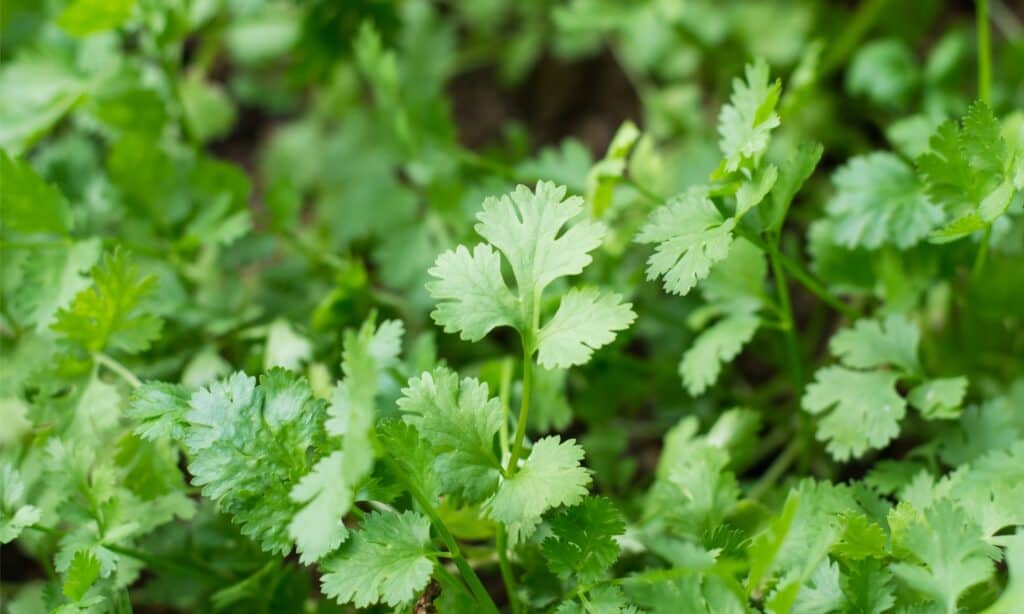
Cilantro is also known as coriander.
©iStock.com/Tevarak
Cilantro and coriander are perfect for planting at the end of September when the weather starts to cool. While cilantro and coriander are part of the same plant, they refer to different parts. Cilantro is the green leaves and stems that are used as a herb. Coriander refers to the seed which is typically ground up and used as a spice.
Cilantro leaves can grow to be bitter if grown in the summer heat, so it’s best to wait until the weather starts to cool. Plant seeds in an area that receives full sun, about 2 inches apart. Keep seeds moist during germination. Seedlings require about 1 inch of water weekly. Once plants are established, water less frequently.
3. Mint
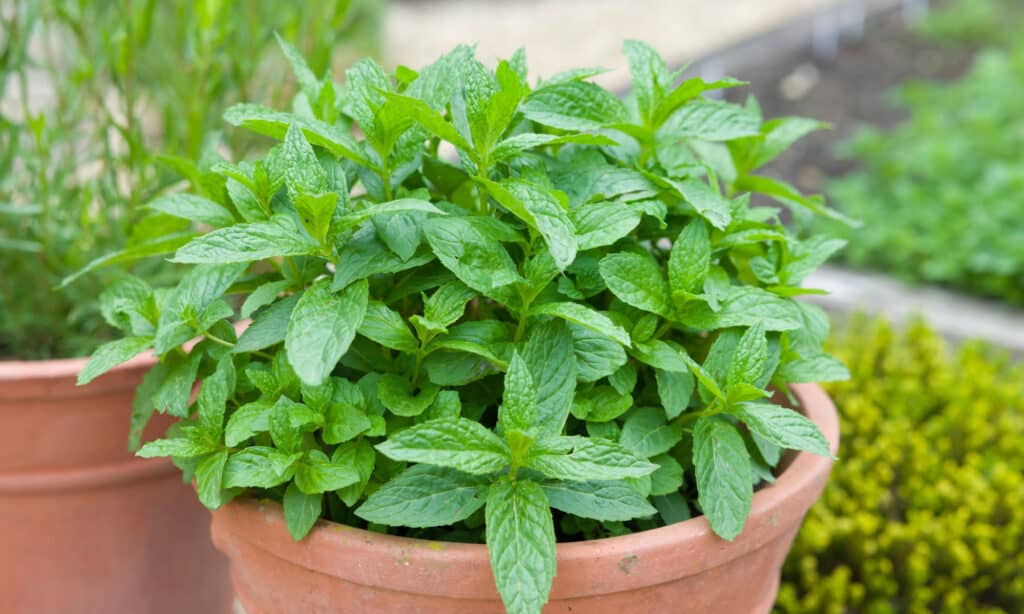
Mint is a very fragrant herb that is used in food, drinks, and herbal remedies.
©Paul Maguire/Shutterstock.com
Mint is a very fragrant herb that is used in food, drinks, and herbal remedies. It is very easy to grow and can thrive in most areas. It spreads very quickly, so be careful where you plant it. Most types of mint will grow in sun or partial shade but may require protection from the midday sun. Whether growing this plant indoors or in a garden bed, it’s certain to thrive.
Because mint spreads so vigorously, it is best to plant in a pot to contain the roots, either above ground or below. Sow seeds ¼ inch deep about 2 feet apart in moist, well-drained soil. For outdoor plants, slightly cover the mint bed with mulch to help keep the soil moist. Harvest frequently to keep the plant healthy.
4. Rosemary
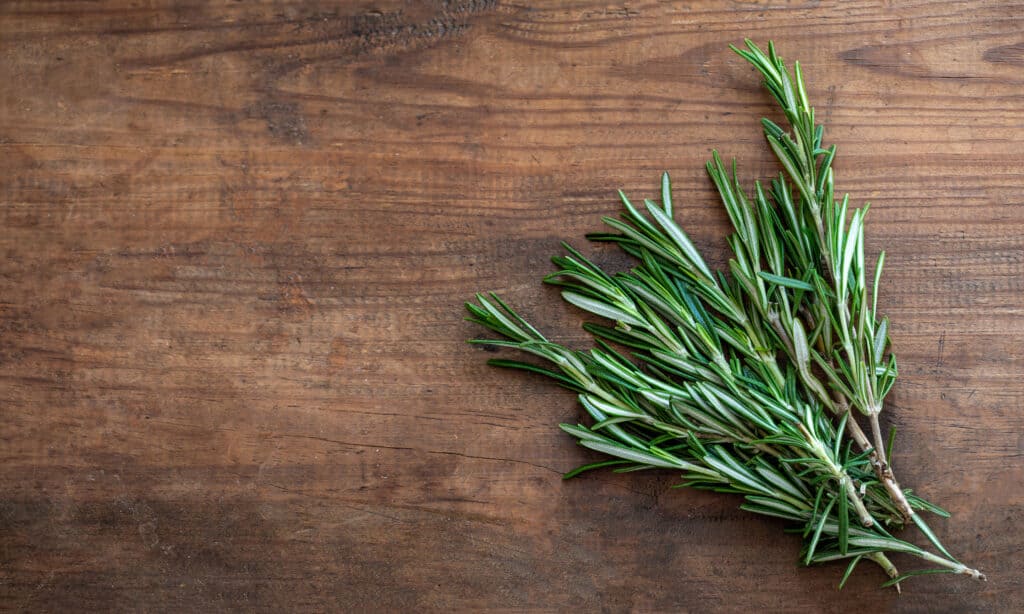
Plant rosemary seeds or cuttings in moist, well-drained soil in areas that get full sun.
©iStock.com/Zakharova_Natalia
In warm areas with fair humidity, rosemary will thrive outdoors, but in other areas, it should be kept as an indoor plant during the fall and winter. Rosemary is best grown from cuttings due to its low germination rate and slow-growing seedlings. Early September is the best time to plant seeds or cuttings due to warm soil temperatures.
Plant rosemary seeds or cuttings in moist, well-drained soil in areas that get full sun. Keep soil moist while roots develop. Water and prune rosemary plants regularly, but be sure not to overwater.
What Animals Eat Herbs and Plants?
Many animals eat herbs and plants, including deer, rabbits, elephants, giraffes, gorillas, koalas, and pandas. Additionally, many types of birds, insects, and other small mammals also consume herbs and plants as a primary source of food.
Many herbivorous animals have evolved specific adaptations to help them efficiently consume and digest plants. For example, many species of deer have long, flexible necks and prehensile tongues that allow them to reach tall plants, while giraffes have extremely long necks that allow them to reach leaves and branches high up in trees. Elephants have large and complex molars that are well-suited for grinding tough plant material, and gorillas and chimpanzees have opposable thumbs that allow them to grasp and manipulate branches and leaves.
Herbivorous animals also have specialized gut microorganisms that help them break down and digest tough plant fibers. For example, cows, sheep, and other ruminants have a four-chambered stomach that ferments plant material before it is digested, while horses and donkeys have large colons and cecum that are specialized for breaking down tough plant material.
Many types of insects and other small invertebrates also consume plants, and some of them have evolved specialized mouthparts and other adaptations that allow them to feed on specific types of plants. For example, caterpillars and other leaf-eating insects have mandibles that are well-suited for chewing through leaves, while many types of beetles and other insects have mouthparts that allow them to bore into wood or other plant tissues.
Preparing Your Garden for Winter
When autumn starts to turn to winter, it’s time to let the garden rest. There are things you can do to help remaining plants survive the winter and prepare the ground for spring planting.
First, of course, harvest your autumn crop and can or freeze the vegetables. Then cover the garden with manure, organic fertilizers, or compost to add nutrients that will soak into the soil over the winter. Replenish the mulch and start a new compost heap for use in the spring. Be sure to take out any weeds or diseased plants and put them in the trash.
Leave the rest of the plants in the ground for soil protection and to provide homes for pollinators that stay for the winter. Flowers with seed heads should be left to feed the winter birds. Some herbs and berries can survive the winter, but some cannot and need to be protected or taken indoors (check guidelines).
Do not prune trees or shrubs, but prune and water perennials (although some are better pruned in the spring; check guidelines). Follow these steps, and you’ll have healthy soil for renewed growth and spring planting. Happy gardening!
The photo featured at the top of this post is © Elan Havrilyuk/Shutterstock.com
Sources
Thank you for reading! Have some feedback for us? Contact the AZ Animals editorial team.







